Salinity Management Guide
Problems involving trees, shrubs, and ground covers
Temperature-related damage
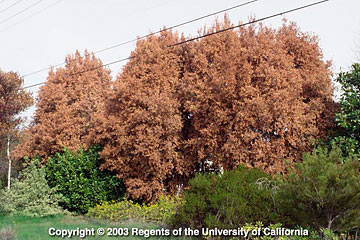
Photo courtesy of Larry Costello. |
Symptoms: Foliage turned reddish brown throughout the canopy of Australian brush cherry. Diagnosis: These trees were injured by several nights of low temperatures. Solutions: The trees may survive and form green foliages again. If not, replant with cold-hardy trees. |
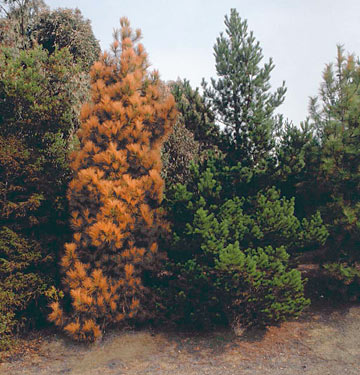
Photo courtesy of Larry Costello. |
Symptoms: The Canary Island pine tree shows injury, but not the Monterey pine to the right. Diagnosis: Injury resulting from cold air (low temperatures). Solutions: If the Canary Island pine does not survive, replace it with a Monterey pine. |
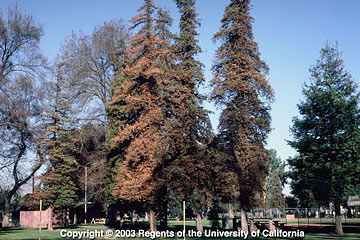
Photo courtesy of Perry. |
Symptoms: The coast redwood trees are reddish brown in color. Diagnosis: Injury resulting from cold temperatures. Solutions: These trees may recover in the spring. It is important to postpone any pruning and plant removal until sufficient time is allowed for recovery. |
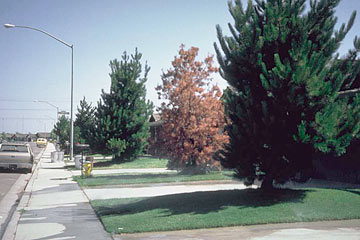
Photo courtesy of Perry. |
Symptoms: Monterey pine has turned reddish brown in color. Diagnosis: Monterey pine is sensitive to, and can be injured by, high temperatures. Solutions: Typically, when Monterey pine is planted where summers are very warm, it may decline and die within 15 years. If the tree does not survive, replant. |
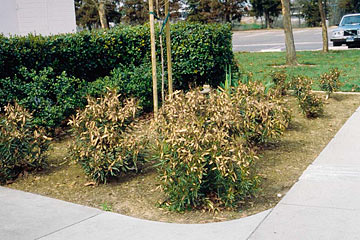
Photo courtesy of Perry. |
Symptoms: Upper half of oleander bush is damaged. Diagnosis: Damage shown results from cold temperatures. Solutions: After frost damage ceases, promote new growth by pruning the injured foliage. |
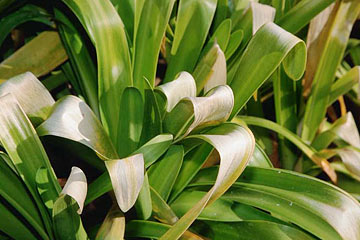
Photo courtesy of Clark. |
Symptoms: The agapanthus is bleached and necrotic. Diagnosis: Damage seen is the result of freezing. Solutions: The plant probably will recover after the frost season has ended. |
| « Previous page | Next page » |